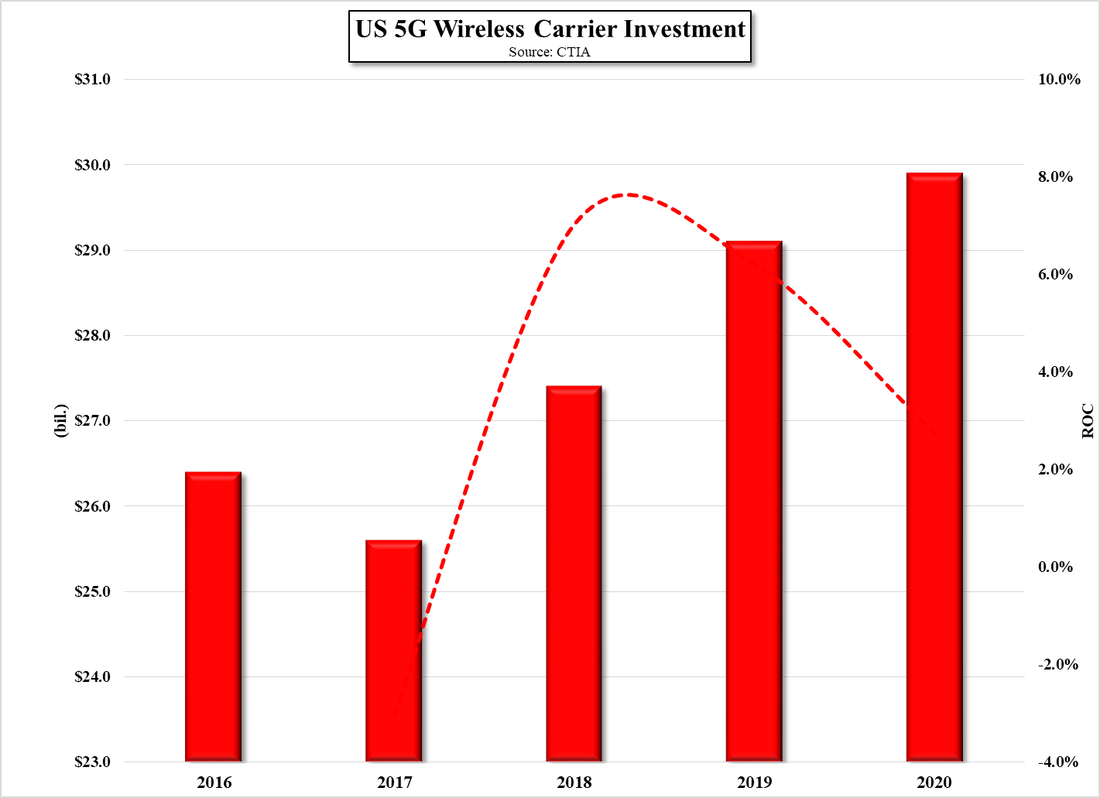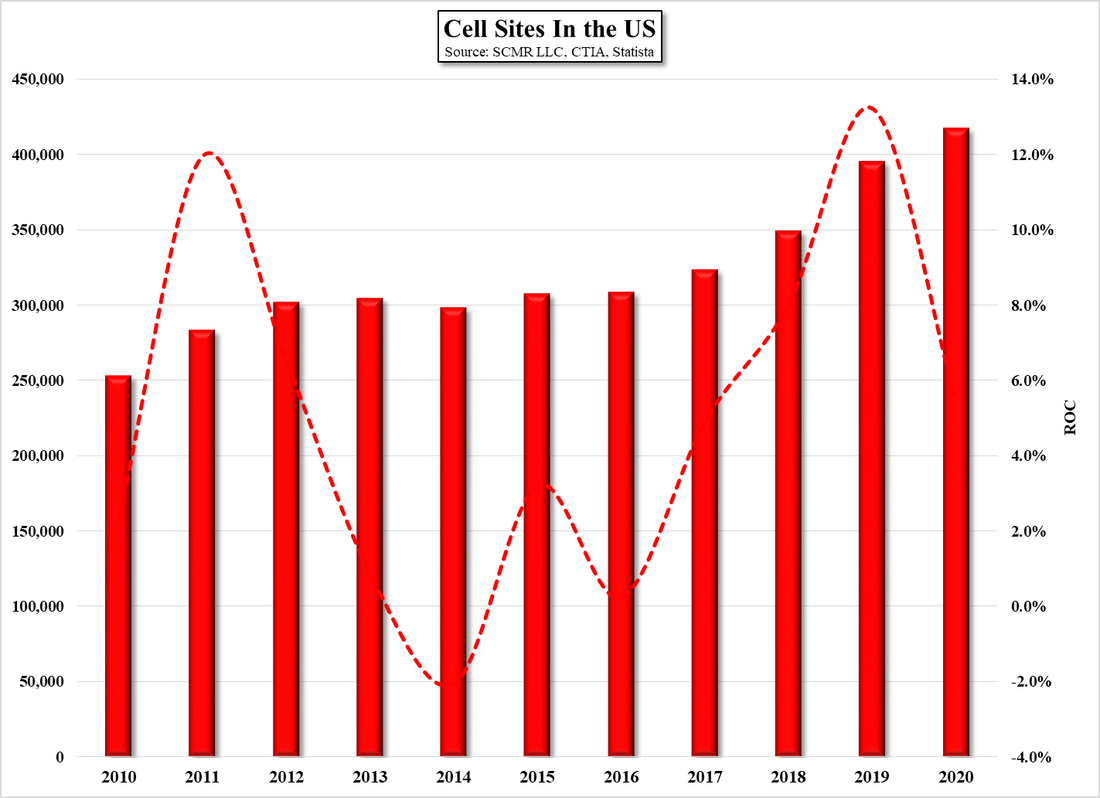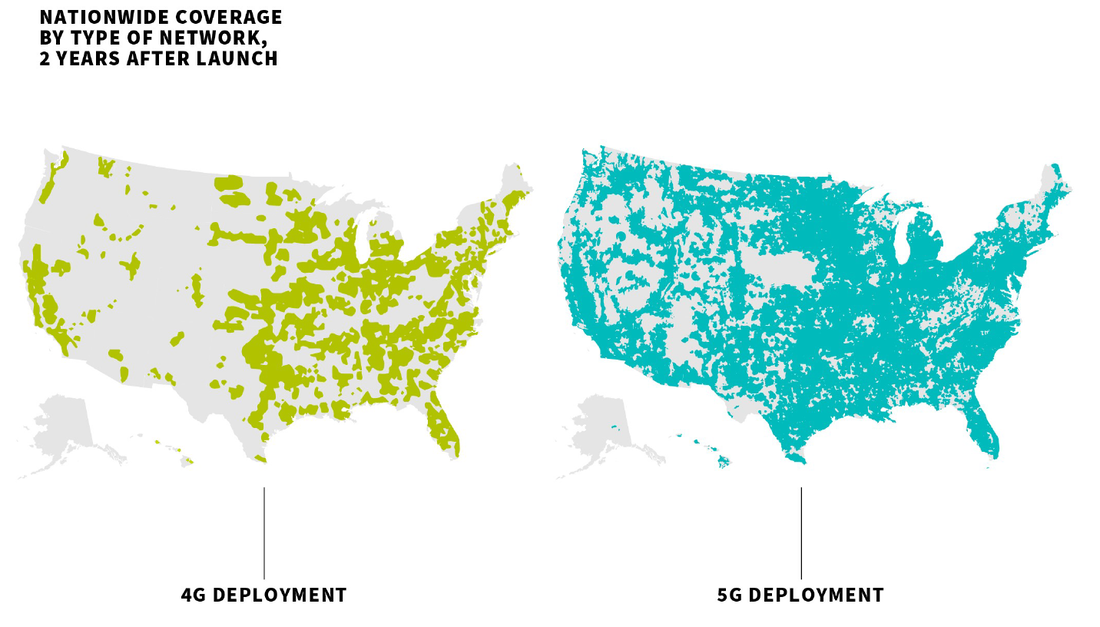Fun With Data – 5G For All (In the US)
Fig. 3 indicates the rising investment made by US carriers in 5G infrastructure, which has totaled $138.4b since 2016. The CTIA adds that such investments have created ~4.5m jobs and generated $1.5t in GDP growth during that period, although we have seen other data that is said to reflect both job growth and GDP contribution from 5G, and believe some poetic license has been taken in considering what is included in those numbers, not only by CTIA but by other wireless trade organizations also. While the US population is ~4.3% of the global total, the US investment indicated above represents 18% of the world’s total mobile investments according to CTIA, but to qualify, that is for all wireless, not just 5G.
5G was mentioned often in the discussion surrounding those changes with the caveat that not changing the rules would place an obstacle in the way of the US leadership in 5G, which stretched the truth a bit, as most early 5G sites were just additions to 4G sites, and the 5G signal path used that same 4G network. Once again the political battle between the US and China had much to do with the legislation, as the US fought against the rapid 5G deployments on the Mainland. That said, given the distance limitations that 5G networks face, it will be quite important to keep 5G cell site restrictions to a minimum or the technology will face limited coverage, but expecting the sites to be almost invisible is a bit far-fetched as there will be far more of them, although ‘microcells’ hanging on street lamps or on top of telephone poles, despite their number, will be far less obtrusive than the massive 4G towers that seem to pop up on every hill.




 RSS Feed
RSS Feed